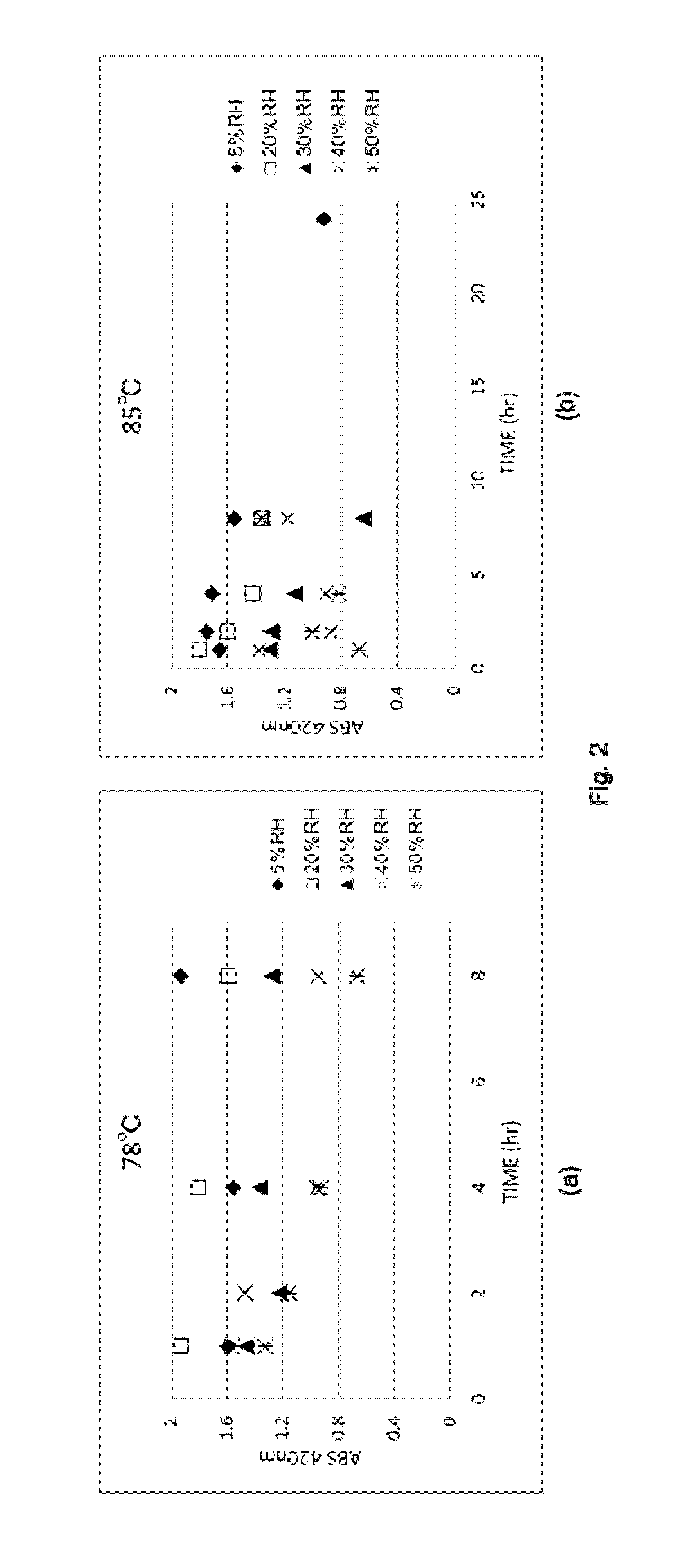Method of manufacturing tobacco raw material and oral tobacco product
a tobacco raw material and tobacco product technology, applied in the field of tobacco raw material manufacturing, can solve the problem that undesirable components contained in tobacco material may seep into the oral cavity of tobacco material, and achieve the effect of improving the quality of tobacco material
- Summary
- Abstract
- Description
- Claims
- Application Information
AI Technical Summary
Benefits of technology
Problems solved by technology
Method used
Image
Examples
reference example 1
[0086]Lower leaves of leaf tobacco of domestic Burley were harvested and were placed in a mechanical drying room, where the leaves were dried in a controlled atmosphere. The controlled atmosphere will be explained next.
[0087]Firstly, the harvested leaves were kept for 12 hours at a dry bulb temperature of 36° C. and a wet bulb temperature of 29° C. (75% RH). Next, the mesophyll was dried for 24 hours at a dry bulb temperature of 45° C. and a wet bulb temperature of 32° C. (relative humidity 42%). Lastly, the entirety of the tobacco leaves, including the tobacco stem, was dried for 36 hours in an atmosphere at a dry bulb temperature of 68° C. and a wet bulb temperature of 40° C. (20% RH), to yield a tobacco leaf material. The above drying step conforms to the drying method disclosed in Non-patent document 1.
[0088]The ABS 420 nm of a water extract of this tobacco leaf material was 1.82, and the PPO activity in the tobacco leaf material was 0.43 U / g.
example 1
[0089]In contrast to the reference example, in Example 1 according to the manufacturing method of the present invention a tobacco leaf material was obtained by firstly keeping a dry bulb temperature of 36° C. and a wet bulb temperature of 29° C. (75% RH) for 12 hours in accordance with the method disclosed in Non-patent document 1, drying next the mesophyll for 24 hours at a dry bulb temperature of 45° C. and a wet bulb temperature of 32° C. (relative humidity 42%), and drying then the leaf veins for 36 hours in an atmosphere at a dry bulb temperature of 68° C. and a wet bulb temperature of 40° C. (20% RH). The a* value herein was −5.966 and the moisture content was 6.36% weight%. After drying, the tobacco leaf material was heated for 60 minutes in a humidity-conditioned atmosphere at a dry bulb temperature of 85° C. and a wet bulb temperature of 69° C. (50% RH), to yield a tobacco material. The obtained tobacco material had an a* value of −2.5 and PPO activity of 0.016 U / g. The ABS...
example 2
[0104]A tobacco leaf material obtained by performing a drying treatment in accordance with the same method as in Reference example 1 was used herein, the relative humidity was adjusted to a specific value, in an environment at a heating temperature of 78° C. or 85° C., and then there were measured the changes in physical properties (a* value, ABS 420 nm, PPO activity) of the tobacco leaf material (tobacco material) as heating time went by.
[0105]Specifically, the relative humidity was adjusted to 5% RH, 20% RH, 30% RH, 40% RH or 50% RH, and the various physical properties were measured upon elapsing of 1 hour, 2 hours, 4 hours, 8 hours (,24 hours) of heating time.
[0106]The results are illustrated in FIG. 1 (a* value), FIG. 2 (ABS 420 nm) and FIG. 3 (PPO activity). The vertical axis (a*) in FIG. 1 illustrates spectrophotometer data expressed according to the L*a*b* method; a smaller a* value entails a greener color. In FIG. 2, a higher absorbance (larger Y-axis value) entails a browne...
PUM
 Login to View More
Login to View More Abstract
Description
Claims
Application Information
 Login to View More
Login to View More - R&D
- Intellectual Property
- Life Sciences
- Materials
- Tech Scout
- Unparalleled Data Quality
- Higher Quality Content
- 60% Fewer Hallucinations
Browse by: Latest US Patents, China's latest patents, Technical Efficacy Thesaurus, Application Domain, Technology Topic, Popular Technical Reports.
© 2025 PatSnap. All rights reserved.Legal|Privacy policy|Modern Slavery Act Transparency Statement|Sitemap|About US| Contact US: help@patsnap.com



